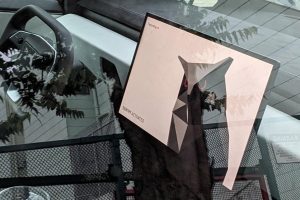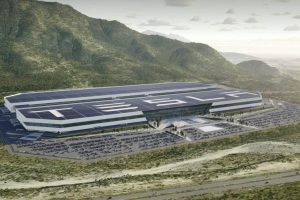A discrepancy in the Tesla Model Y’s specifications leaves experts and fans confused and wondering what will come to the United States.
Tesla has always been at least a little tight-lipped about its engineering and design, and this pseudo-secrecy certainly isn’t aided by its lack of a communications team. However, this has come to a head recently as fans have discovered a discrepancy in the specifications of Tesla’s newest offering, the rear-wheel-drive single-motor Model Y, which currently is only sold in select markets.
The Tesla Model Y spec discrepancy was first identified by Mathias Føns on Twitter, who pointed out that the Model Y RWD sold in North America is significantly heavier and charges substantially faster than its counterpart abroad.
Looking at the spec sheets posted on Tesla websites worldwide, the heavier and faster charging Model Y RWD is only being sold in North America, including both Canada and Mexico, though the vehicle is not yet available in the States. In contrast, models sold in Australia, Europe, and Asia are lighter and charge significantly slower. Specifically, the North American model is 389kg (857.6 lbs) heavier than its global counterpart and charges almost twice as fast, 250kW vs. 170kW. The listed weight of the model sold in China is 2kg heavier than the one sold in Europe, but it has the same recorded charging speed.
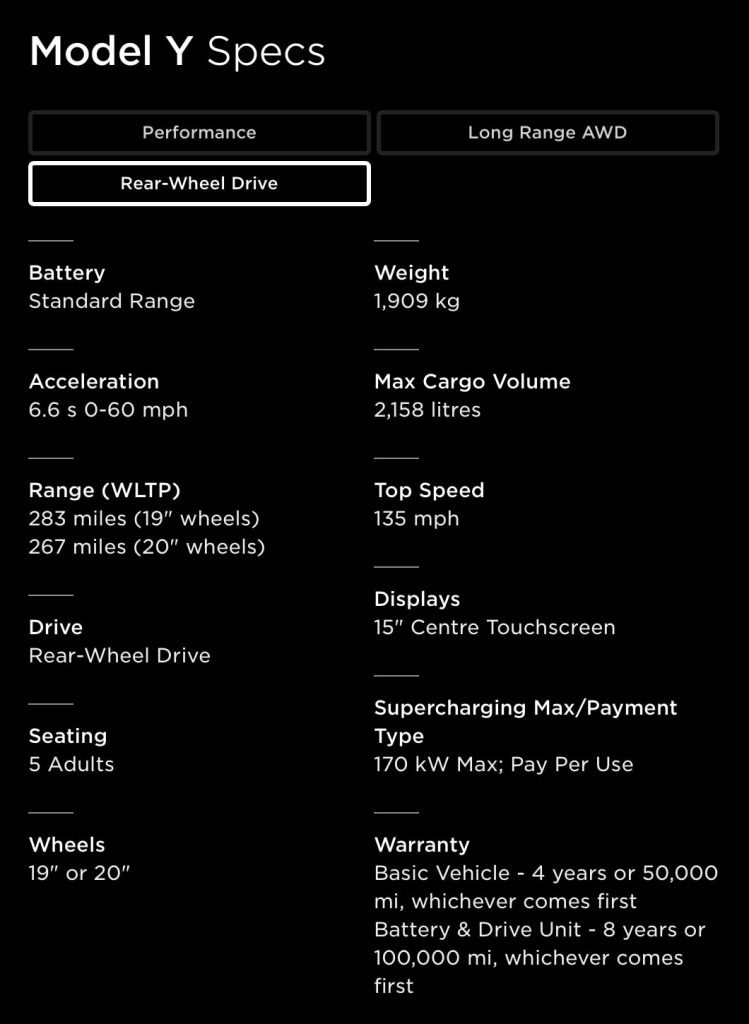
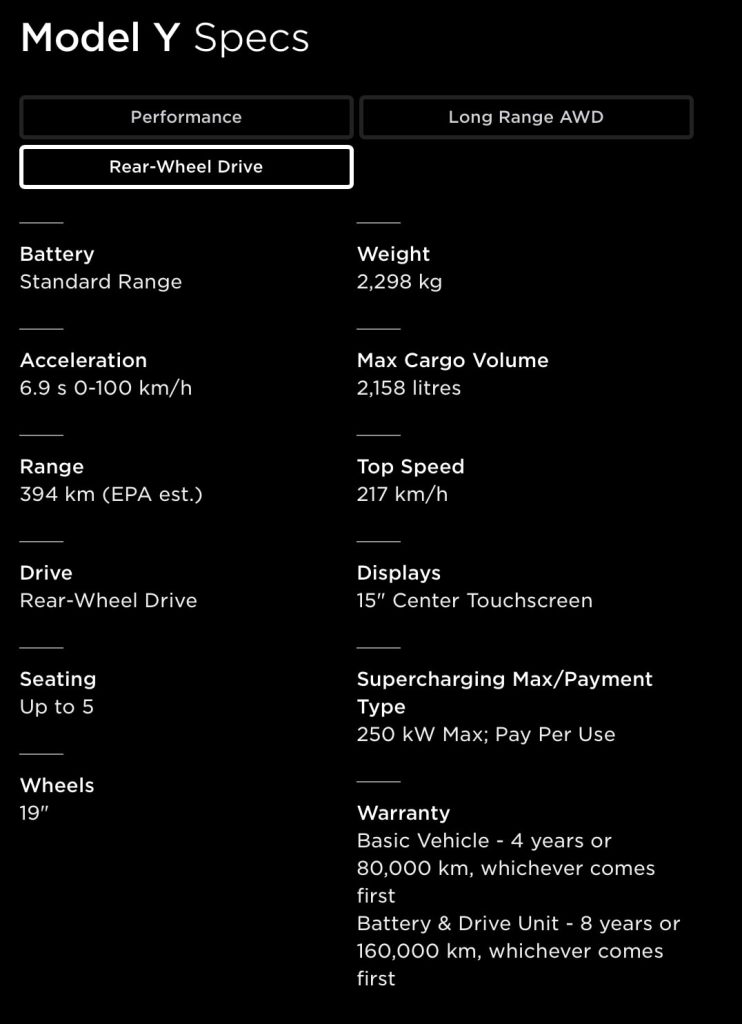
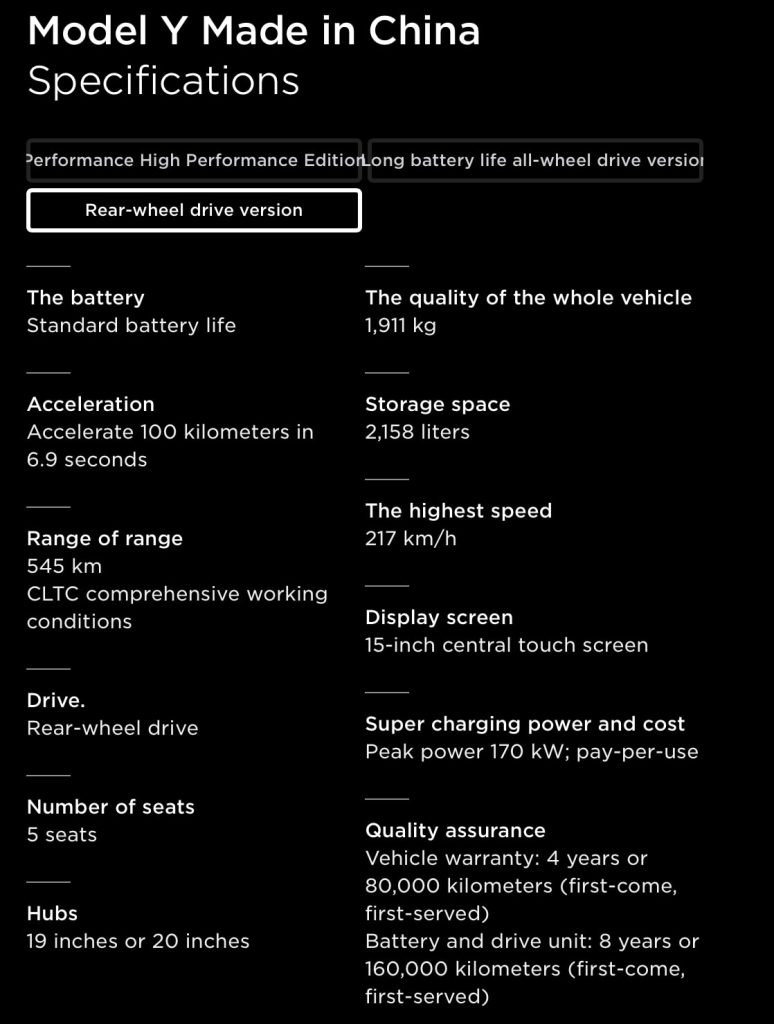
The two models also seem to differ slightly in estimated range, though they aren’t precisely comparable considering they use entirely different testing schedules; EPA in North America, WLTP in Europe and Australia, and CLTC in China.
Strangely, this discrepancy continues when comparing the Model Y RWD with the Model Y Long-Range AWD sold in the same market. According to the Tesla Canada website, the RWD is 319kg (703.3 lbs) heavier than the LR AWD, though they charge at the same speed, 250kW.
While some have hypothesized that this weight difference has to do with how the weight is measured in each country, the more likely difference, which could also explain the dramatic difference in charging speed, is battery chemistry. Tesla does not list this difference on its website. Still, using lithium iron phosphate (LFP) batteries in North America would explain the incredible weight difference and the charging speed increase, that is, if the global model is using a lithium nickel manganese cobalt (NMC) battery.
Tesla CEO Elon Musk has previously noted that the automaker plans to switch all of its lower-priced offerings to the cheaper-to-produce LFP battery, further adding credence to the battery chemistry hypothesis.
With Tesla expected to continue to grow the reach of each of its product lines, many anticipate it will only be a matter of time before the RWD variant of the Model Y makes its way to Tesla’s home market, the United States. And with the rest of North America already using the heavier, faster charging model, Americans should expect access to this variant instead of the global version.
Along with the charging speed bump, the LFP battery would provide significantly improved durability and battery lifespan compared to those sold in Europe, Asia, and Australia.


